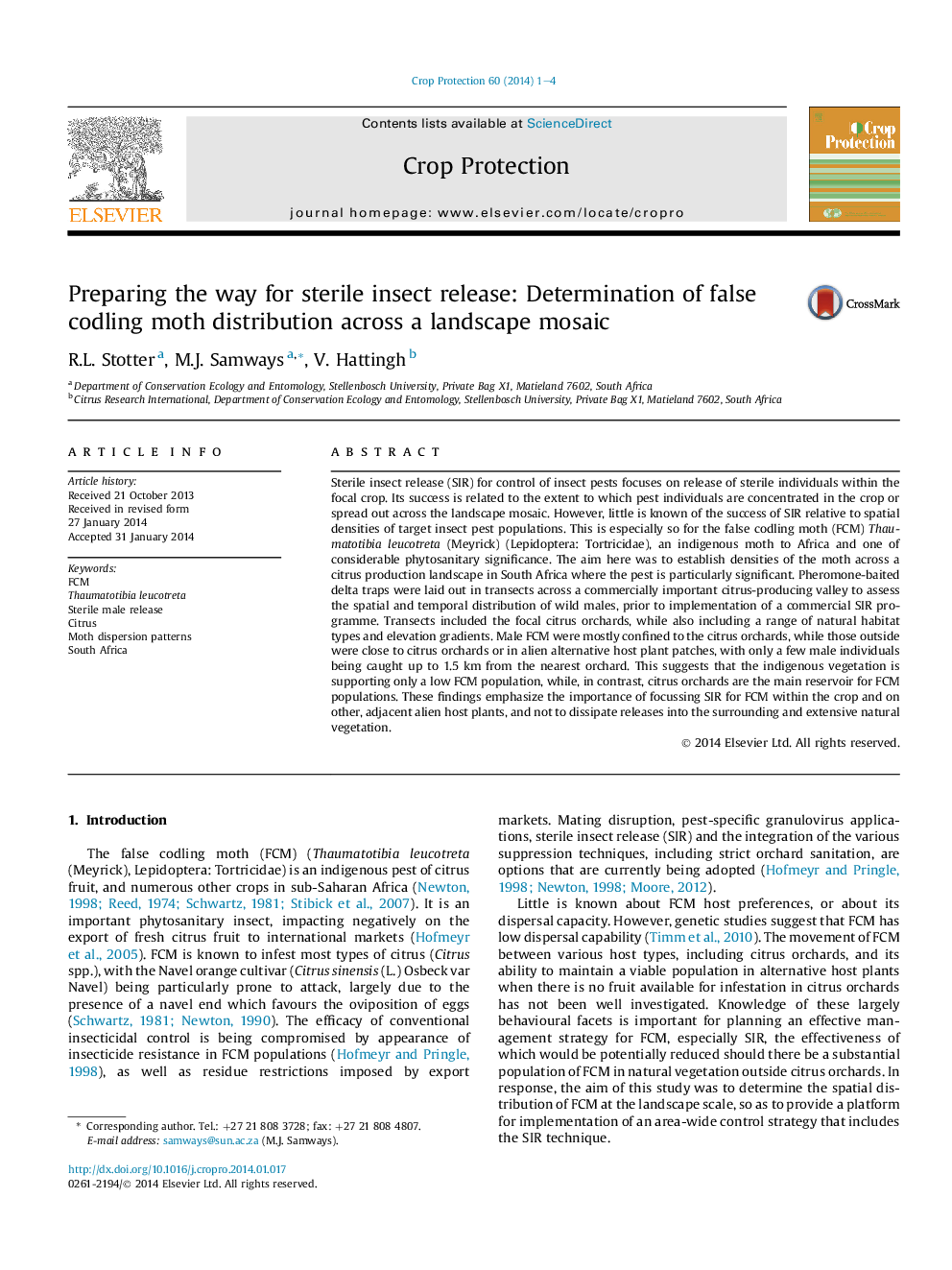| Article ID | Journal | Published Year | Pages | File Type |
|---|---|---|---|---|
| 4505859 | Crop Protection | 2014 | 4 Pages |
•Clear results on a highly important phytosanitary pest, false codling moth.•Essential for paving the way for SIT for this pest, and others.•Citrus orchards are the reservoir for the pest while natural vegetation is not.•The significance of alternate hosts for SIT is clarified.•Clarification of important principles for SIT against this pest and others.
Sterile insect release (SIR) for control of insect pests focuses on release of sterile individuals within the focal crop. Its success is related to the extent to which pest individuals are concentrated in the crop or spread out across the landscape mosaic. However, little is known of the success of SIR relative to spatial densities of target insect pest populations. This is especially so for the false codling moth (FCM) Thaumatotibia leucotreta (Meyrick) (Lepidoptera: Tortricidae), an indigenous moth to Africa and one of considerable phytosanitary significance. The aim here was to establish densities of the moth across a citrus production landscape in South Africa where the pest is particularly significant. Pheromone-baited delta traps were laid out in transects across a commercially important citrus-producing valley to assess the spatial and temporal distribution of wild males, prior to implementation of a commercial SIR programme. Transects included the focal citrus orchards, while also including a range of natural habitat types and elevation gradients. Male FCM were mostly confined to the citrus orchards, while those outside were close to citrus orchards or in alien alternative host plant patches, with only a few male individuals being caught up to 1.5 km from the nearest orchard. This suggests that the indigenous vegetation is supporting only a low FCM population, while, in contrast, citrus orchards are the main reservoir for FCM populations. These findings emphasize the importance of focussing SIR for FCM within the crop and on other, adjacent alien host plants, and not to dissipate releases into the surrounding and extensive natural vegetation.
